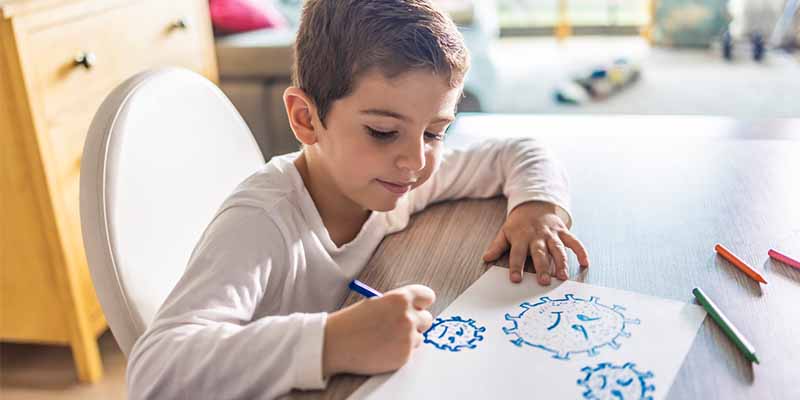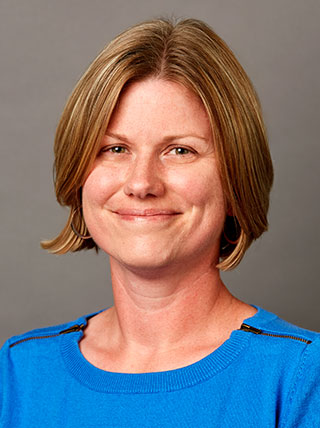CHR Develops New Expertise in CASCADIA Study
Stories - April 25, 2025

By Jill Pope, Senior Scientific Editor
 Allison Nalway, PhD
Allison Nalway, PhD
In 2024, CHR wrapped up the CASCADIA study, an ambitious undertaking that advanced our understanding of the coronavirus as well as COVID-19 vaccine effectiveness. This large, two-year study posed numerous logistical challenges for the study team and led to impressive accomplishments.
The study’s goal was to examine the effectiveness of COVID-19 vaccines among children. Allison Naleway, PhD, a Distinguished Investigator and Associate Director of Science Programs at CHR, led the study at CHR in partnership with the University of Washington School of Medicine.
Although the CASCADIA study examined vaccine effectiveness, it did not give any vaccines. Instead, it assessed the effectiveness of the COVID-19 vaccines that people chose to receive or not receive. The study, funded by the Centers for Disease Control and Prevention (CDC), enrolled people who were both vaccinated and unvaccinated.
Ambitious Goals
Together, Kaiser Permanente Northwest and the University of Washington aimed to enroll 3500 participants from the Portland and Seattle metro areas. Study teams at each location needed to enroll about 1750 people, including about 1200 children and 550 adults.
Because of its focus on children, CASCADIA gave the CHR team a chance to develop new expertise. CHR has a well-earned reputation for recruiting and retaining research participants, but, Naleway noted, “Working with children is not something we’ve done a lot of in the past.”
To meet its ambitious goals, the study organized mailings to KPNW health plan members, using postcards and brochures to explain the study. Study staff posted flyers in KPNW medical clinics and dental offices, used social media ads, and recruited at neighborhood events, such as Sunday Parkways, and community health events. They also contacted schools and day care centers, and directed people to a study website where they could find out if they were eligible.
The extensive efforts paid off. Says Naleway, “Remarkably we had 3142 participants (or 88%) who stayed with us and completed the study protocol through follow-up.” Ultimately, Naleway’s team at CHR recruited about 1200 children ranging in age from 6 months through 17 years.
What We Asked of Participants
Study participants were asked to complete weekly and monthly surveys about their symptoms, and to self-collect nasal swabs. Swabs were then picked up by courier and tested for coronavirus, influenza, and respiratory syncytial virus (RSV); participants received results back within a few days. Access to frequent COVID testing with quick results was appealing to some participants. Participants were also asked to visit a clinic for one blood draw per year.
Because the study enrolled more than one family member in many instances, staff realized it could be challenging for families to keep track of swab kits. To overcome this challenge, the study developed a fun way to keep things straight—each family member chose their own animal sticker. That animal was then used to label and identify their swab kits for the whole study. Participants could choose from a wide variety of familiar Northwest animals, including an owl, slug, crab, octopus, wolf, or bald eagle.
Getting Swabs to the Lab
Over the course of the study, the University of Washington team shipped more than 200,000 nasal swab kits to participants. Because all lab testing was done at the UW lab in Seattle, the study hired a courier to collect swabs from Portland area participants and drive them to Seattle every day. The goal was to get results back to participants within 72 hours.
Naleway explained, “We were sending close to 3,000 specimens to the UW lab every week for testing. The UW lab did genomic sequencing, and we were able to look at how coronavirus variants evolved over time in our study population, and this data was very useful to the CDC.”
Study Results
The CASCADIA study team published its main findings in the Journal of the American Medical Association (Feb 6, 2024). The study showed that COVID-19 vaccines protected children and adolescents against infection. The effectiveness of the vaccine was 58% among children 5-11, and 48% among children 12-17.
Naleway called the CASCADIA study “a Herculean effort,” adding, “I still have a hard time believing we pulled this off, but we did.” She shared some statistics from the project, saying, “These numbers just speak to the volume of work we did and reflect the amazing rapport our staff built with participants.”
Participants enrolled: 3,570
Average weekly swab return rate: 76.5%
Total swabs tested: 189,623